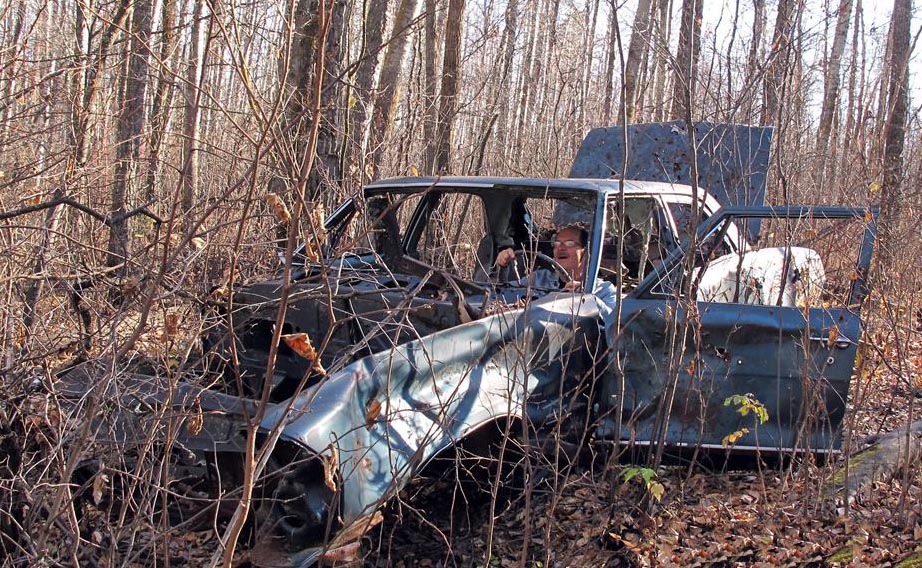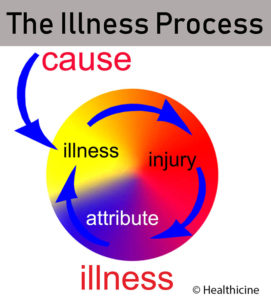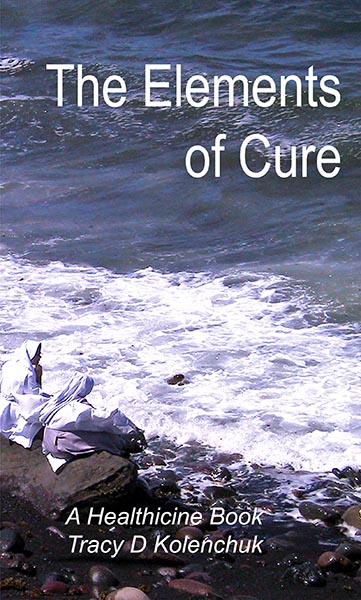 I often say I’m taking my car to the vet, the car veterinarian. When my car is sick, it’s my pet and the mechanic is my vet. It’s a useful metaphor, one we can use to explore and understand the concepts of curing.
I often say I’m taking my car to the vet, the car veterinarian. When my car is sick, it’s my pet and the mechanic is my vet. It’s a useful metaphor, one we can use to explore and understand the concepts of curing.
What does the mechanic actually do? Does a mechanic cure a car? No. They cure car illnesses, car problems. An illness, like any problem, is not a thing, it’s a negative.
A mechanic cures illnesses in cars. The illness is usually noticed by the owner, the driver. A car is not a car unless it works. It consists of the physical aspects of a car, and the functioning processes that act like a car. When it’s not working as the owner expects, the car might be ill, although sometimes the owner is mistaken.
We might say that a disease is what the mechanic diagnoses and cures (repairs). Sometimes the owner sees an illness that the mechanic explains as normal, even healthy. The car vibrates when braking on ice. Sometimes, the mechanic sees something the owner is not aware of – the air filter needs to be changed. Note: A sickness is what the neighbour might see as a problem (the car is too loud) even though the owner and mechanic might see this as a positive.
Three Types of Illness
There are three basic types of illnesses. People, or cars, it makes no difference.
- process illnesses: The car processes are out of tune. It’s burning too much gas or oil, or it’s making strange noises.
- attribute illnesses: The windshield has a big crack. The fender has a small dent.
- injury illnesses: An injury is an illness that can heal. Cars don’t heal often, but sometimes, a tire that is punctured is self-healing. Sometimes a small dent pops back in place.
Every illness has a cause. Process illnesses have a cause in the present. Injuries have a cause in the past. Attribute illnesses are caused by a negative attribute that has a cause in the past. When can address the present cause, the illness is cured. Mechanics often prevent illness by addressing causes before an illness occurs.
Just as in people, each of the three illness types has a different cure.
Process illnesses are cured by changing the process. If the car is out of tune, burning too much gas, the mechanic tunes it up and it runs fine. Wouldn’t it be nice if a human tune-up was so simple?
Attribute illnesses require transformation. A stone chip in the windshield might be patched, a small surgery. A large crack – the windshield needs to be replaced, a larger more expensive surgery. A broken starter, a burnt out headlight, even bent keys can be cured by a transformation. The starter and headlight are replaced. The key might be simply bent back into shape. Transformed. Cured. Sometimes an adjustment, like a wheel alignement is needed.
Injury illnesses are healed. Healing is a type of transformation. Healing and transformation sometimes go together. Many transformations require healing to complete the cure. When a small crack in the windshield is patched, the hole is cleaned out and filled, a transformation. The patch is cured with heat, and after that healing is completed, the windshield has been cured. Like most cures, it’s not perfect, but a cure is a cure.
Chronic Illnesses
Cars can also have chronic illnesses. A chronic illness has a chronic cause. A crack in the windshield might be an injury – if it could heal. But it can’t heal by itself, so it persists, blocking the driver’s vision until it is cured. Attributes persist. Attribute caused illnesses are chronic by the chronic or persistent nature of the cause.
Chronic process illnesses have chronic process causes. A car that is poorly tuned might smoke, and addressing the process cures the illness – the smoke stops.
Sometimes, a mechanic cannot address the cause, cannot cure a process illness, because the cause is not in the car. Someone who drives in the water a lot might find their car has rust, like arthritis, that comes back after it is repaired. The signs and symptoms were treated, but the illness was never cured, because the cause was never addressed. Someone who drives an automatic with one foot on the brake might notice that their brakes wear out too quickly. No mechanic can cure these chronic illnesses – but sometimes they can understand and explain the cause to the driver. If the driver’s behaviour changes, the illness will be cured.
The Circle of Illnesses
 The circle of illness for cars is exactly the same as the circle of illness for people. An illness might start from a negative process, or from an injury which might be healed, or from the development of a negative attribute, requiring a transformation.
The circle of illness for cars is exactly the same as the circle of illness for people. An illness might start from a negative process, or from an injury which might be healed, or from the development of a negative attribute, requiring a transformation.
Illness, while it is not cured, can cause another illness, usually the next illness in the circle. A process illness can cause injuries and attribute illnesses. An injury, if not healed, becomes an attribute illness. An attribute illness, if not cured, can cause process illnesses and injuries. The circle of illness leads to complex illnesses.
Complex Illnesses
A complex illness is a set of illness elements with a single cause. It is complex because it requires more than one cure. Each type of illness can cause another illness element. A poorly tuned car will wear out quicker. It might, over time, cause other illnesses – if it is not cured. A burnt out headlight can lead to an accident. A flat tire, if you drive on it, can cause a damaged rim, brakes, alignment – if you live. A crack in the windshield can limit visibility and can also be a weakness that causes the windshield to shatter from a second stone strike. Curing the primary illness prevents complex illnesses from developing.
Complex illnesses require multiple cures. If the wheels are out of balance, or out of alignment, steering might be affected. However, the imbalance can cause unnatural tire wear. The initial illness – a poor alignment – caused a second illness, early imbalanced tire wear. Two cures are required – to fix the alignment and to replace the tires. This is a complex illness with a single cause.
Compound Illnesses
A compound illness is an illness with multiple causes – but similar or overlapping signs and symptoms. It can only be totally cured by addressing each cause. Sometimes, addressing a single cause gives some relief.
In people, compound illnesses are common – because simple illnesses are often cured by health and healing. We tend to only notice an illness as it grows, as it becomes compound. We also tend to treat illnesses, rather than work to cure them – allowing compound illnesses to develop. In cars, compound illnesses are not so common – and mechanics have less difficulty separating them into two or more distinct illnesses, each with a unique cause.
Compound illnesses can occur in cars, often when the first illness is ignored, or not noticed until a second cause presents similar symptoms. A single stone chip is a simple illness, requiring one cure. Two stone chips – two cures. Sometimes a more comprehensive cure addresses several small illnesses. Two stone chips and a cracked windshield are cured by replacing the windshield. The cure proves the illness.
Cure? or Remission?
What’s the difference between a cure and just remission? Does the mechanic cure the car, or only the signs and symptoms into remission? Mechanics don’t have many opportunities to suppress symptoms – although it is sometimes possible. When people report hearing strange noises – a doctor must determine if there is a real noise or not. Maybe a psychiatrist is needed. Or maybe the patient has tinnitus, and the doctor might advise them to learn to live with the noise. If your car is making a strange noise, the mechanic can’t mask your symptoms to treat the problem. If your shocks are broken, aspirin won’t really help you feel better about the bumps in the road.
A cure is when the cause has been addressed. In cars, it’s pretty clear. If the cause is a process – it will only be cured when the process cause is addressed. After it is cured, the car might drift out of tune over time – but that does not invalidate the cure.
If a windshield is cracked and repaired by a windshield surgeon, it’s cured. Another stone might cause it to crack again. It might crack more easily the second time. But the initial illness is cured, not “in remission”.
Can a car illness go into remission? Actually, yes. Maybe you’ve taken your car to the vet, and you explain the noise it makes, and when the noise happens… But when the mechanic tests it – there is no problem. How can this be? Sometimes the cause of an illness – even a car illness – waxes and wanes or disappears. Just our luck that it wanes when we arrive at the vet. The same thing can happen when a patient visits the doctor, only to find that the illness has disappeared in the time waiting for an appointment.
Alternative Cures
There are lots of alternative car cures. When your windshield is cracked, you might buy a cure at the local hardware store and do it yourself, or have it cured by a friend or neighbour. Many people repair their own cars. Many take them to “non-dealer” repair shops, often finding cures that are less expensive and sometimes better quality. Sometimes a dealer cannot solve a car illness – but a different mechanic cures it.
Alternative cures are not a mystery in cars. Cars are manufactured and delivered with “adequate” tires. If the tires are not good enough, you may need to seek an alternative manufacturer.
Incurable Illness
Sometimes a car has an incurable illness. We often think of incurable illnesses as, well incurable. But with a car, just about any illness is curable – the only challenge is cost. In a car, an incurable illness is one that’s not worth curing. Therefore, it cannot be cured. This might be a minor illness, that the owner chooses to ignore, even a more serious illness where the owner decides to live with the disease. Maybe the owner decides to leave a fender dented rather than expend the time and money to cure it.
Sometimes, the cause of the illness is found in the driver, not the car. If the driver cannot change, the illness cannot be cured.
Cars die. When a car no longer functions as a car and is not worth curing, it goes to the big car lot in the sky. It might be dismantled, donating parts to other cars. It no longer exists as a car.
Cars get old. Is an old, decrepit car ill? Or just old? What’s the difference between a car that is badly out of tune, and one that is simply too old? Out of tune is a specific problem that can be addressed. Old and decrepit can be beyond simple repairs and might require a complete overhaul. The owner might choose euthanasia – and the purchase of a new car.
to your health, tracy
Author: The Elements of Cure
When we study the concepts of illness, the three types of illnesses, three types of causes, and three types of cures – we can apply them to cars just as easy as to people. Perhaps easier, because mechanics know how to cure car illnesses.
We need more practice curing people illnesses.
This post was written using the concepts of cure as published in the book:



